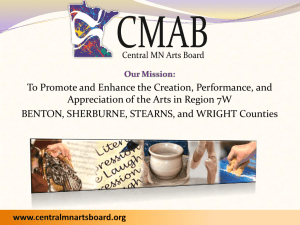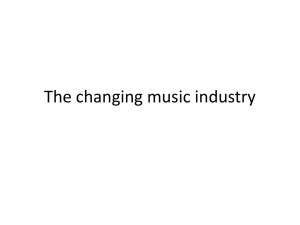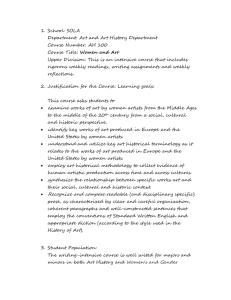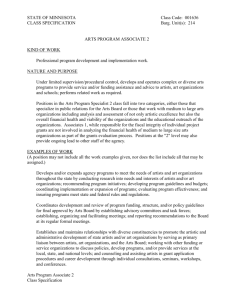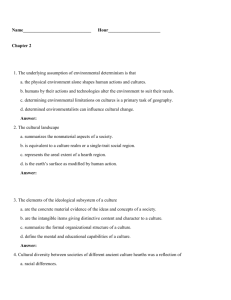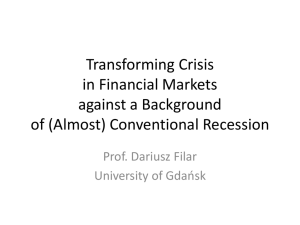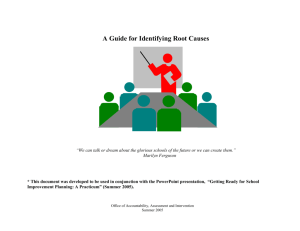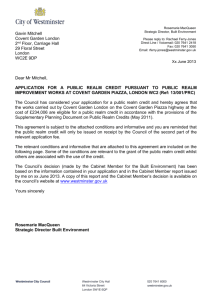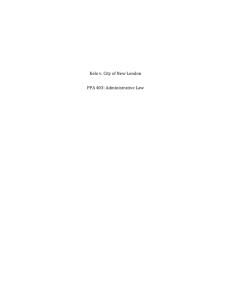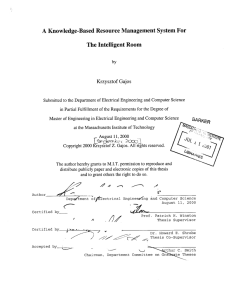The Role of Artists and the Arts
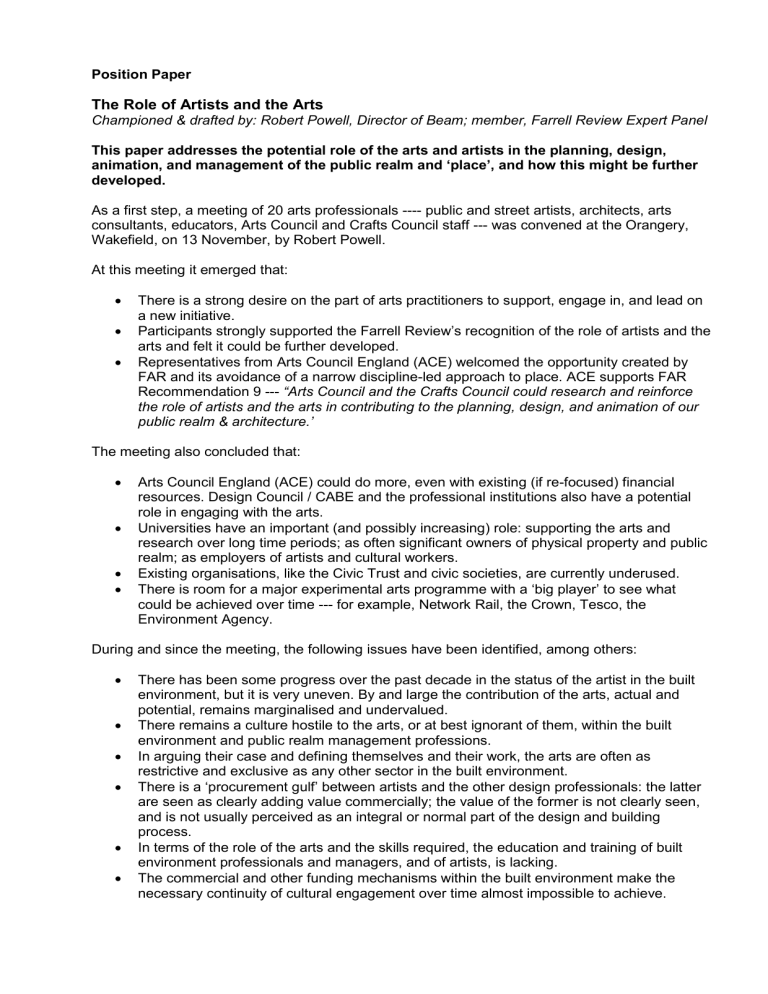
Position Paper
The Role of Artists and the Arts
Championed & drafted by: Robert Powell, Director of Beam; member, Farrell Review Expert Panel
This paper addresses the potential role of the arts and artists in the planning, design, animation, and management of the public realm and ‘place’, and how this might be further developed.
As a first step, a meeting of 20 arts professionals ---- public and street artists, architects, arts consultants, educators, Arts Council and Crafts Council staff --- was convened at the Orangery,
Wakefield, on 13 November, by Robert Powell.
At this meeting it emerged that:
There is a strong desire on the part of arts practitioners to support, engage in, and lead on a new initiative.
Participants strongly supported the Farrell Review’s recognition of the role of artists and the arts and felt it could be further developed.
Representatives from Arts Council England (ACE) welcomed the opportunity created by
FAR and its avoidance of a narrow discipline-led approach to place. ACE supports FAR
Recommendation 9 --- “Arts Council and the Crafts Council could research and reinforce the role of artists and the arts in contributing to the planning, design, and animation of our public realm & architecture.’
The meeting also concluded that:
Arts Council England (ACE) could do more, even with existing (if re-focused) financial resources. Design Council / CABE and the professional institutions also have a potential role in engaging with the arts.
Universities have an important (and possibly increasing) role: supporting the arts and research over long time periods; as often significant owners of physical property and public realm; as employers of artists and cultural workers.
Existing organisations, like the Civic Trust and civic societies, are currently underused.
There is room for a major experimental arts programme with a ‘big player’ to see what could be achieved over time --- for example, Network Rail, the Crown, Tesco, the
Environment Agency.
During and since the meeting, the following issues have been identified, among others:
There has been some progress over the past decade in the status of the artist in the built environment, but it is very uneven. By and large the contribution of the arts, actual and potential, remains marginalised and undervalued.
There remains a culture hostile to the arts, or at best ignorant of them, within the built environment and public realm management professions.
In arguing their case and defining themselves and their work, the arts are often as restrictive and exclusive as any other sector in the built environment.
There is a ‘procurement gulf’ between artists and the other design professionals: the latter are seen as clearly adding value commercially; the value of the former is not clearly seen, and is not usually perceived as an integral or normal part of the design and building process.
In terms of the role of the arts and the skills required, the education and training of built environment professionals and managers, and of artists, is lacking.
The commercial and other funding mechanisms within the built environment make the necessary continuity of cultural engagement over time almost impossible to achieve.
The opportunities and levers for the arts within the National Planning Policy Framework
(NPPF) need to be more fully exploited and promoted.
There is a need to gather information about successful projects, and why they were successful.
Next Steps
A further national meeting is being planned, to take place in London. Its purpose is to:
Update on actions and discussions since the November meeting
Debate the following Challenge Points
Establish a means of maintaining momentum
Create an outline 24-month Action Plan
Challenge Points
1. What’s needed is a new Manifesto for the arts in the public realm, in the context of the
FAR’s broad definition of ‘place’ and ‘place-making’.
2. We should set up an independent Arts Interest & Steering Group linked to the Place
Alliance, and the group should consider whether a more formal organisation is needed
3. We need a national action-based Conference to share, debate, further develop, and take forward our ideas
4. We cannot prove that the arts and culture, from the start and throughout the long period required, are of equal importance to the other ingredients necessary for successful place-making.
5. The arts in the public realm must be re-defined and practised in a dynamic, multiartform, cross-disciplinary way, where creativity is understood to emerge from a dynamic mix of experts, laypeople, citizens, and professionals.
6. The public arts cannot be restricted to being about ‘beauty’ or ‘community’; they exist along a spectrum of tension running from antagonism through conviviality to delight.
7. Arts practitioners should be included in the spectrum of skills required in Place Review.
8. Provision of cultural continuity in public realm projects should be a planning permission issue and requirement in the licensing of use of space.
9. Free community street festivals should be zero-rated for VAT purposes
10. Arts Council, acting with others, should establish a major long-term experimental programme co-sponsored by a ‘big player’ --- for example, Network Rail, the Crown,
Tesco, the Environment Agency.


